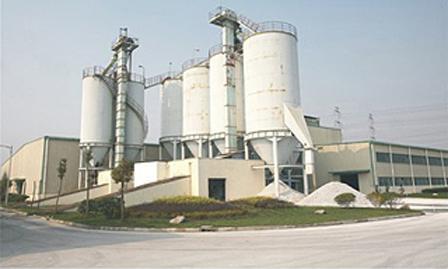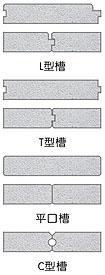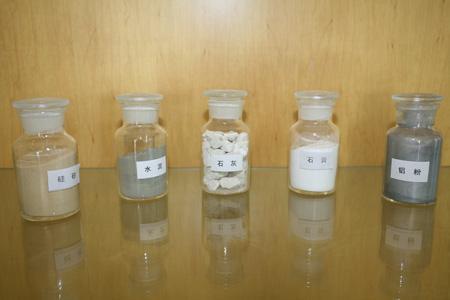| Model: | - |
|---|---|
| Brand: | - |
| Origin: | Made In China |
| Category: | Industrial Supplies / Construction Machine |
| Label: | brick/block , panel/board , manufacture |
| Price: |
¥23500000
/ plant
|
| Min. Order: | 1 plant |
Product Description
Factory Prifabricating Brick/Block & Panel/Board
---------------------------------------------------------------------
To establish a new factory prefabricating modern Autoclaved Lightweight and environment-protecting Brick/Block & Panel/Board with yearly producing capacity from 300k cubic meters costs about CNY23.5million.
---------------------------------------------------------------------
*
*
ATTACHMENT
There are at least three kinds of concrete for your choice to produce your needed concrete brick, block, panel and other products.
1) Traditional Concrete
Its main components are cement, sand and small stones which make the heavy brick or block greatly increasing the costs spent on foundation and labour.
2) Autoclaved Aerated Concrete (AAC) or Autoclaved Lightweight Concrete (ALC)
Its main components are cement, sand, lime, gypsum and aluminium powder.
(Please refer to the attached reading materil for more information )
3) Flyash Concrete
Flyash - a strength-increasing powder additive patially instead of portland cement
(Please refer to the attached reading materil for more information )
Reading Material For Reference
-----------------------------------------
About AAC
COST EFFECTIVE
Operating cost savings can be realized through reductions in maintenance, energy bills and insurance.
DURABILITY
Durability, and its environmental impact, is an important factor when considering use of a building material. A structure that does not need major repairs and renovation every twenty years or so, can save money, inconvenience, energy and other resources. This is of tremendous advantage to the building owner, creating a better investment and value up-front and over the long-term. Autoclaved Aerated Concrete (AAC) has proven to be a very durable material. There are numerous structures in many different climates worldwide, many over sixty years old, in excellent condition. AAC will not rot, warp, rust, corrode, or otherwise decompose. AAC provides a very low maintenance building, saving considerable time and money in upkeep over the life of the building. Although damage to an AAC wall is unlikely, repair is simple using an AAC repair mortar. The durability of finishes, both exterior and interior, plays an important role environmentally.
HIGH THERMAL INSULATION
AAC has exceptional thermal insulating qualities. An AAC wall provides solid insulation, without the thermal bridging (cold spots) associated with through-wall framing members or fasteners. Buildings constructed with AAC tend to be cooler in summer and warmer in winter. As a result, the building's air conditioning or heating use may be lower and makes the use of additional thermal insulation unnecessary. Customers reported lower utility bills.
In addition to greatly moderating the interior temperature, this lag time allows energy consumption to be shifted to off-peak hours, a benefit to power companies. In many temperate environments, an 8-inch-thick AAC wall provides more than the required thermal protection without additional insulation. Better temperature and humidity control provides greater comfort for building occupants. A test was done on a 10" AAC wall. The outside of the wall was painted black to maximize heat absorption from the sun. A thermometer was placed on the exterior and interior surfaces of the wall to measure its temperature changes over a twenty-four hour period. The exterior surface fluctuated over 126 degrees fahrenheight while the interior surface fluctuated only +2 degrees fahrenheight.
FIRE RESISTENCE
AAC is non-combustible. A 4-inch thick non-load-bearing or a 6-inch thick load-bearing AAC wall, provides a U.L. classified 4-hour fire rating. This far exceeds the requirements of the Standard Building Code, and provides a significant level of protection against loss of life and property. Toxic fumes generated from traditional materials burning pose a danger. AAC is an inorganic material that does not burn. The melting point of AAC is over 2900 ºF, more than twice the typical temperature in a building fire of 1200 ºF. The use of AAC eliminates the need for applying costly fireproofing materials.
MOLD RESISTENCE
Concerns of mold growing in our homes and commercial buildings are at an all time high. Fears of illnesses related to mold growth have even prompted some people to vacate their homes. Fungi contaminated residences and buildings have become legal and insurance nightmares. In fact, one insurance company's claims rose from 12 in 1999, to 15,000 in 2001. Mold spores are everywhere but require certain conditions to multiply-a warm temperature, sustained moisture, and organic nutrients. The typical nutrient source for mold is moisture-damaged building materials. AAC is a breathable, concrete product made with clean, inorganic materials and does not offer the nutrients needed for mold growth. Tests conducted by an independent laboratory on AAC block against the three fungi most commonly involved in indoor air quality studies showed AAC to be fungal resistant and repressive in allowing mold to multiply. Certainly there are many remedies and preventative measures that can be taken to avert the growth of mold in a structure. One of these is the use of AAC building blocks in the construction of both interior and exterior walls. No structure is mold-proof, but choosing appropriate building materials with proper ventilation and good maintenance practices can greatly ease the threat of mold problems in your structure.
ACOUSTIC INSULATION
A commonly overlooked environmental problem in construction is noise pollution. The solid wall construction of a building made of AAC provides exceptional acoustic insulation. Its porous structure and high surface mass, coupled with its ability to dampen mechanical vibration energy, greatly reduces outside environmental noise pollution and the indoor echo effect (i.e. reflecting sound) in empty rooms, providing a quieter, more comfortable interior for the occupants. AAC sound wall systems can achieve STC ratings up to 60.
DESIGN FLEXIBILITY
The surface of AAC blocks can be incised to create reveals, signage, and graphics. Corners of walls can be rasped to create rounded edges or entases, and arches can be cut with saws. AAC can also be cut to create radius walls. Adhesive mortar can be used to laminate thin slabs or strips of AAC or manufactured stone (cultered stone) to an otherwise flat wall to build up quoins, cornices, and other ornamentation. Bas-relief treatments can also be carved into the surface of an AAC wall.
SEISMIC DESIGN
AAC has performed well for many years in seismically active and hurricane-prone regions around the world. AAC buildings have shown good resistance to earthquake forces. The non-combustible and fire resistant characteristics provide further advantage against fires commonly associated with earthquakes.
PEST RESISTENCE
AAC is an inorganic, insect resistant, solid wall construction material. It is impossible for insects and rodents to inhabit in them. Without concern of termites and other insects damaging or inhabiting the AAC portion of the structure, chemical treatments can be reduced while maintaining the maximum protection against damage to the building.
IMPROVED INDOOR AIR QUALITY
Some of the poorest quality air we breathe is in our homes and the buildings we work in. It is estimated that 80 to 90 percent of an average person's time is spent indoors. AAC is an inorganic material that contains no toxic substances and does not decompose or off-gas. Since AAC is both a structural and insulation material, it allows the elimination of other materials that may contribute to poor indoor air quality. AAC is an ideal material for homes for the chemically sensitive.
SIMPLIFIED CONSTRUCTION
AAC simplifies construction by minimizing the number of different building products involved. Operating cost savings for the building owner prove to be substantial, with life cycle break-even within a relatively short period. The AAC building owner may see a significant reduction of maintenance and energy (heating and cooling) costs as well as an increase in overall comfort and safety.
WORKBILITY
AAC blocks are quickly and accurately cut with a band saw or hand saw to the desired dimension including accurate angles and other shapes. AAC can also be drilled, nailed, grooved, routed, shaped, sculpted, carved, coated, floated, screwed into and milled with common tools and finished with paint, tile, drywall, plaster, or veneer. Window trim, chases for plumbing, wiring and outlets, and decorative features like keystones, window sills and columns can easily be created on the job site.
----------------------------------
About Flyash Product
Fly Ash - A STRENGTH-INCREASING POWDER ADDITIVE FOR PORTLAND-CEMENT-BASED MIXES
PRODUCT OVERVIEW
Fly Ash powder is a fine siliceous dust selectively collected from the controlled combustion of pulverised black coal. During the combustions process, the bulk of the particles formed are microscopic spheres - lightgrey in colour and much more rounded particle shaped than Portland cement. In the presence of hydrating Portland cement, Fly Ash powder behaves like a secondary cement by reacting slowly at ambient temperatures with Calcium Hydroxide (lime) liberated during these long-term hydration reactions of water with cement. Chemically, the spherical particles of Fly Ash are composed mainly of glassy compounds of silica, alumina, iron and calcium. The product can be regarded as virtually inert and therefore may, after adequate testing, be suitable for incorporation into coatings, plastics, adhesives, rubber and other composite materials as a non-hiding, light grey extender/filler pigment at low cost.
ECOLOGICALLY SUSTAINABLE DEVELOPMENT
Fly ash can be used to replace up to 40 % of milled cement. It reduces the amount of raw material and fuel required in the manufacture of cement. That means green house gas emissions are reduced.
USE
For Portland cement based structural members, concrete pavements and all concrete products. Also as a cost lowering, binder reducing and abrasion resisting additive for plastics, paints, adhesives, rubber etc, virtually all types of mortars/grouts, floors, screeds and toppings etc. In bituminous concrete, slab-jacking, soil stabilisation, mine shaft fill, filtration, as a plastic consistency improving additive for baked clay products etc, road base, in embankment construction, as well as for back fill etc.
DOSAGE RATES
The dose rate proportion for Portland cement, ranges from 15% to 30% replacement in pre-mixed concrete and 20% to 50% with autoclave during in concrete blocks, bricks and pavers for given ultimate compressive strength which lowers the cost of production.
PACKAGING
Fly Ash is supplied in 10kg paper bags.
STORAGE
For maximum shelf life, Fly Ash should be stored in its original container, out of direct sunlight, in appropriate, dry conditions.
PRECAUTIONS
Fly Ash is classified as hazardous, and it is recommended that the following Personal Protective Equipment (PPE) and precautions are followed when handling and using the product: Wear full overalls, gloves safety goggles and a dust mask during mixing Wash overalls regularly. Avoid skin and eye contact. Always wash hands before eating, drinking, smoking or using the toilet.
----------------------------------
Member Information
| PROJECT CONSTRUCTION COMPANY GROUP | |
|---|---|
| Country/Region: | Shang Hai - China |
| Business Nature: | Manufacturer |
| Phone: | 13162549131 |
| Contact: | L Wong (Chief) |
| Last Online: | 23 Sep, 2024 |




